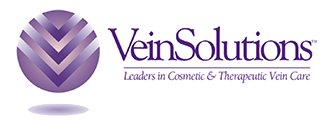What are Reticular Veins?
Reticular veins are one of the most common forms of vein disorders we see at VeinSolutions in Austin, Georgetown, and Kyle. In appearance, reticular veins are larger than spider veins but smaller, and less bulging than varicose veins. They can look bluish, green, or red in color under the skin and may spread in a distinct spiderweb or spaghetti-like pattern. Typically appearing on the legs or even the face, reticular veins are also sometimes referred to as “feeder veins.”
Although the swelling of reticular veins can be painful, the appearance of these medium-sized veins is often considered more troubling than any medical problem associated with them.
What causes Reticular Veins?
Similar to how spider and varicose veins form, reticular veins are caused when blood pools in the veins of the legs instead of flowing towards the heart. Normally functioning veins send blood back up to the heart from various parts of the body. When there is a defect in a vein valve, the blood flows backwards away from the heart – and collects – down towards the legs and feet.
Because of this improper functioning, reticular veins may appear more pronounced, or become swollen and bothersome, when standing for long periods of time.
Certain risk factors that may lead to the development of reticular veins include:
- Age: vein elasticity and function weaken as you grow older
- Heredity: if someone in your family suffers from reticular veins, or another vein disorder, you are likely susceptible
- Obesity: excess weight puts pressure on veins in the legs
- Pregnancy: veins can become enlarged as the fetus grows and the body’s blood volume increases
- Other existing medical conditions: especially those involving the abdomen, such as abdominal tumors and chronic constipation, can put added pressure on the abdomen and legs
What are symptoms of Reticular Veins?
Some of the most common symptoms of reticular veins are:
- Blue, green, red, or purplish spider-like appearance just under the skin’s surface
- Frequently painful and swollen legs after standing for long periods of time
- Occasional itching or burning at site of clustered veins
How are Reticular Veins treated?
There are several forms of self-care that you can adopt to help alleviate pain and minimize the appearance of reticular veins:
- Put your feet up: elevating them above the level of your heart for a few minutes each day can prevent blood from pooling and flowing downwards
- Stay active: changing your position often, not standing or sitting for too long, and engaging in regular exercise can improve circulation and strengthen veins
- Wear compression stockings: these help put gentle pressure on the leg veins to prevent blood from flowing backwards and promote better circulation
If nothing eases the pain and reduces the appearance, there are minimally-invasive cosmetic reticular vein treatments available to help, such as sclerotherapy. Sclerotherapy involves injecting a solution via a very thin needle into affected veins to break down the abnormal structures and encourage better blood flow.
Our board-certified vascular surgeons at VeinSolutions perform sclerotherapy for reticular veins frequently as a simple, in-office procedure.
At VeinSolutions, we can help you love the look of your legs again!
Reticular Vein FAQ
What can I expect when I visit your office?
When you arrive, you’ll complete a patient health history form and meet with one of our vein specialists. You’ll receive a physical exam to assess your vein health and appearance, including an ultrasound of your legs. We take a conservative approach to vein treatment and may recommend wearing compression stockings or lifestyle modification to help minimize the appearance of your veins. If minimally invasive vein treatment may help, we’ll provide information on what to expect, costs, as well as pre- and post-op care.
Is it possible to have reticular veins, spider veins and varicose veins?
A person may have several vein disorders due to underlying defects in how the veins function. We thoroughly assess your vein health and will provide you with a comprehensive diagnosis and individualized treatment options that can help to improve the look and health of your veins.
Are reticular veins related to spider veins?
In some cases, they may be. Reticular veins are also called feeder veins because they may “feed into” spider veins and serve as a source for the blood that is trapped in the spider veins. For a person in this situation, removal of the reticular veins can also reduce the appearance of spider veins.
Can sclerotherapy safely treat reticular veins anywhere on the body?
Yes. Though reticular veins most commonly form in the legs and feet, sclerotherapy can improve the appearance of reticular veins in the thighs, calves, ankles and feet.
If I have a vein treatment, will I need to be hospitalized or take time off work?
All of the treatments at VeinSolutions are performed on an outpatient basis, meaning a hospital visit and stay are not required. Some patients are ready to return to work or other activities following their procedure, but prolonged sitting, standing, and heavy exercise should be avoided for several days following treatment.
Will reticular veins come back after sclerotherapy?
Sclerotherapy helps to improve blood circulation by closing off damaged, visible veins. This can delay or minimize the formation of new reticular veins, but eventually new visible veins are likely to form. Additional sclerotherapy sessions can maintain an improved appearance.
How long until my reticular veins look better after treatment?
Results take time as the treated veins are gradually reabsorbed by your body following treatment. The amount of time you’ll need will depend on the severity and size of your reticular veins, how well you follow aftercare instructions, and other factors. Most of our patients treated for reticular veins see their final results about 6 months after treatment.
